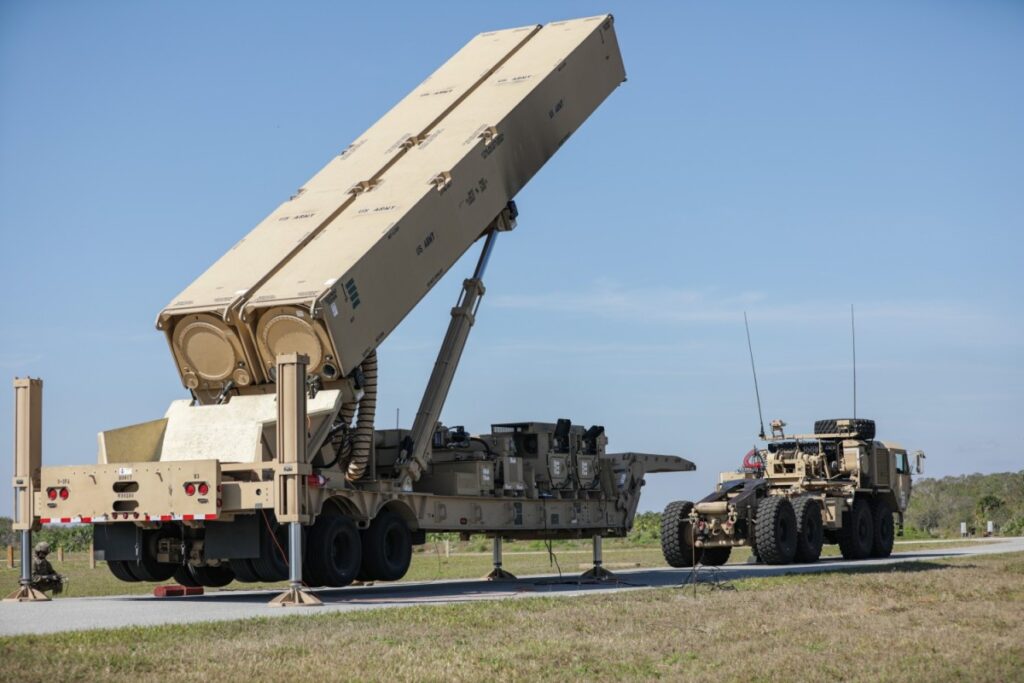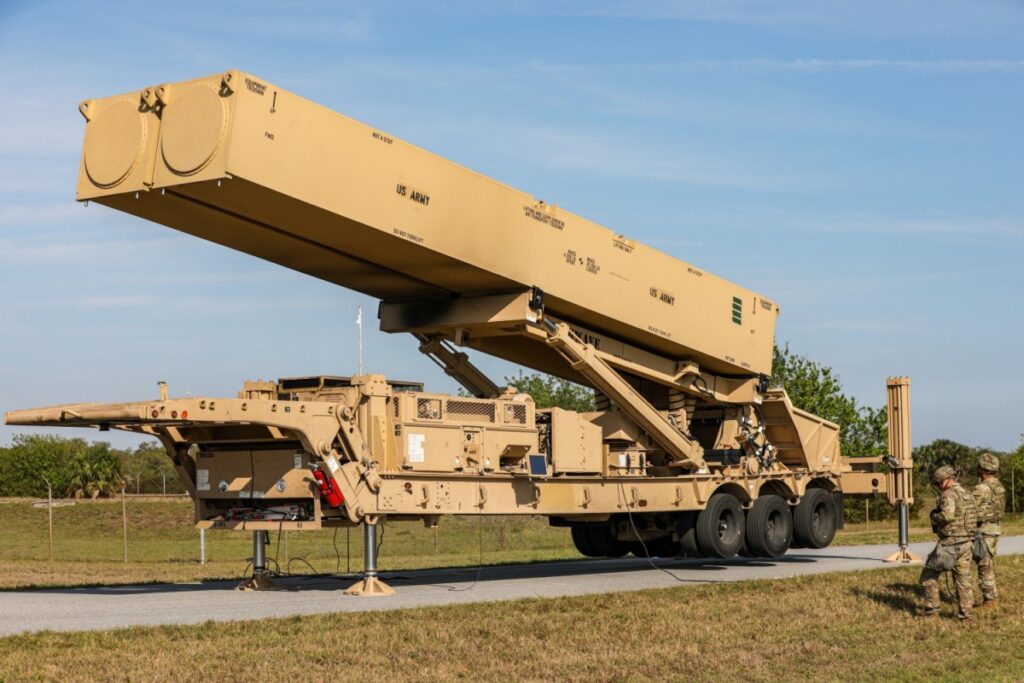Dark Eagle is one of the US military’s most promising hypersonic programs
- By Stavros Atlamazoglou
Share This Article

Rapid advances in technology are ushering in a new age of warfare that threatens to upend the military balance. Hypersonic missiles, directed energy weapons, anti-space munitions, and artificial intelligence are challenging the status quo.
But if you ask any commanding officer of a combatant command about what the most acute threat to U.S. conventional military superiority is right now, they will probably tell you hypersonics. Outlandishly fast, hypersonic weapons have the potential to penetrate any defense and deliver catastrophic hits.
Acknowledging the threat, the U.S. military is investing heavily in hypersonics and one of the most promising programs is the Army’s Dark Eagle hypersonic munition.
The Dark Eagle Long Range Hypersonic Weapon (LRHW) is a medium-range surface-to-surface hypersonic missile designed for the U.S. Army. It is comprised of two components: the missile and the hypersonic glide body.
Lockheed Martin and Northrop Grumman are working together on the missile component of the hypersonic munition. The missile component serves as the two-stage booster for the weapon, propelling it into the atmosphere.
The second component is the glide body, which will use a booster rocket motor to accelerate to hypersonic speeds. (It will be able to reach upwards of Mach 5, or close to 3,900 miles per hour). The Army wants the glide body to be maneuverable, thus making it even more difficult to detect and intercept. The Army is working closely with the Navy to develop the weapon.

“This land-based, truck-launched system is armed with hypersonic missiles that can travel well over 3,800 miles per hour. They can reach the top of the Earth’s atmosphere and remain just beyond the range of air and missile defense systems until they are ready to strike, and by then, it’s too late to react,” the Army has said about the Dark Eagle hypersonic munition.
“The LRHW system provides the Army a strategic attack weapon system to defeat Anti-Access/Area Denial (A2/AD) capabilities, suppress adversary long-range fires, and engage other high payoff/time-critical targets.” the Army has added.
The Army has tested parts of Dark Eagle or the whole system several times. Although a number of tests have failed, the Army still aims for an experimental prototype with transferable combat capability in 2024.
In its 2025 budget request, the Army is asking $1,282 billion for the Dark Eagle, $744 million for procurement of missiles, and $538 million for research, development, testing, and evaluation.
There is, however, some debate about the system’s cost as, according to the Congressional Budget Office, the cost for a missile could rise to approximately $41 million. In comparison, a single Trident II (D5) ballistic missile used by the Navy for nuclear deterrence (it can take a nuclear warhead) costs about $31 million each.
Related: Chinese military journal asserts Russia lied about ‘hypersonic’ Kinzhal
The importance of hypersonic weapons
Hypersonic weapons can travel at such extreme speeds that they operate outside an adversary’s air defenses.
Russia and China (especially Beijing) have been developing potent Anti-Access/Aerial Denial (A2/AD) systems. These A2/AD systems could create “keep out” zones in which U.S. and NATO systems would only be able to operate at their extreme peril. For example, in a war over Taiwan, the Chinese military would activate its A2/AD systems to create a no-entry bubble around the island nation, thus preventing U.S. carrier strike groups from approaching and rendering help, and if a carrier can’t launch its aircraft in combat, then it’s largely useless.
With the prospect of a large-scale, conventional war with a near-peer adversary like China and Russia looming in the background, hypersonic technology is all that more important. In many ways, hypersonic weapons would be able to bypass current air defense mechanisms and inflict devastating hits on a military force.
The biggest challenge to hypersonic weapons has been heat. Hypersonic munitions travel at such extreme speeds in the atmosphere that their sensitive electronics and aviation systems can’t easily withstand the heat generated. In contrast to ballistic missiles, which fly fast but above the atmosphere before re-entering, and cruise missiles, which fly in the atmosphere but at vastly lower speeds, hypersonic munitions have to withstand temperatures as high as 3,000° Fahrenheit.
Read more from Sandboxx News
- Six tips to mentally prepare for Navy SEAL training
- How much does it cost to train an Air Force pilot? A LOT
- Celebrating the highest military honor in the US
- Air Force adds dozens of hot-pit refueling sites as it preps for future war
- The US Intelligence Community assesses the state of the Russian military
Related Posts
Sandboxx News Merch
-

‘AirPower’ Classic Hoodie
$46.00 – $48.00 Select options This product has multiple variants. The options may be chosen on the product page -

‘Sandboxx News’ Trucker Cap
$27.00 Select options This product has multiple variants. The options may be chosen on the product page -

F-35 ‘Lightning’ Framed Poster
$45.00 – $111.00 Select options This product has multiple variants. The options may be chosen on the product page
Stavros Atlamazoglou
Greek Army veteran (National service with 575th Marines Battalion and Army HQ). Johns Hopkins University. You will usually find him on the top of a mountain admiring the view and wondering how he got there.
Related to: Gear & Tech

The Long Range Desert Group and the birth of special operations around the world

SDV: The secret weapon of the Navy SEAL Teams

What damage can Ukraine inflict on Russia using its long-range Western weapons?

C-5 Super Galaxy: Anywhere in the world in 24 hours
Sandboxx News
-

‘Sandboxx News’ Trucker Cap
$27.00 Select options This product has multiple variants. The options may be chosen on the product page -

‘AirPower’ Classic Hoodie
$46.00 – $48.00 Select options This product has multiple variants. The options may be chosen on the product page -

‘AirPower’ Golf Rope Hat
$31.00 Select options This product has multiple variants. The options may be chosen on the product page -

‘Sandboxx News’ Dad Hat
$27.00 Select options This product has multiple variants. The options may be chosen on the product page
